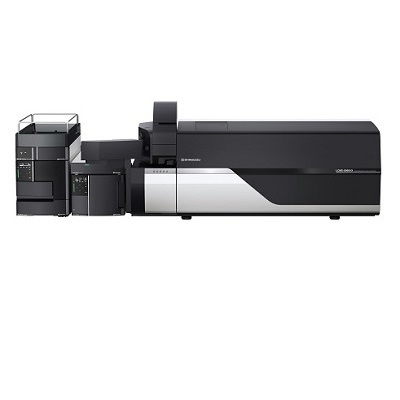
Improvement in the sensitivity of an LC/MS/MS method can generally be achieved by reducing the analytical scale of the analysis. However, reducing the analytical scale significantly to nano-flow reduces the throughput, stability, and robustness as a trade-off for greater sensitivity. Nexera Mikros, a Shimadzu microflow LC/MS system, offers a balanced solution to increased sensitivity with less compromise to throughput and robustness, using flow rates from 1 to 500 μL/min and column I.D. from 0.1 to 1 mm. It achieves stable and sensitive quantitative analysis through robust performance of microflow solvent delivery, optimized ion source design, the unique UF-Link column connection, and system variety that supports a wide range of applications.
Improvement in the sensitivity of an LC/MS/MS method can generally be achieved by reducing the analytical scale of the analysis. However, reducing the analytical scale significantly to nano-flow reduces the throughput, stability, and robustness as a trade-off for greater sensitivity. Nexera Mikros, a Shimadzu microflow LC/MS system, offers a balanced solution to increased sensitivity with less compromise to throughput and robustness, using flow rates from 1 to 500 μL/min and column I.D. from 0.1 to 1 mm. It achieves stable and sensitive quantitative analysis through robust performance of microflow solvent delivery, optimized ion source design, the unique UF-Link column connection, and system variety that supports a wide range of applications.
Sensitivity remains a challenge for many vitamin D metabolites, such as 1,25(OH)2 di-hydroxyvitamin D and 24,25(OH)2 di-hydroxyvitamin D, because they lack easily ionizable functional groups and are in low-abundance. As shown below, microflow LC/MS/MS analysis of standard solutions of the aforementioned vitamin D analytes resulted in a three- to five-fold improvement in the signal-to-noise ratio when compared to semi-microflow analysis.
nSMOL (nano-surface and molecular orientation limited proteolysis) is a proprietary, ground-breaking process that enables selective proteolysis of the Fab region of antibodies using trypsin-immobilized nanoparticles. Fab-derived peptides are quantified via MRM measurement on a high-sensitivity mass spectrometer. The Nexera Mikros system achieved signal intensities 12 times higher than with conventional flow rates, with a corresponding lower limit of detection of 0.025 μg/mL and good linearity. The Nexera Mikros system is ideal for low-level quantitation of peptides by LCMS.
The Nexera Mikros system delivers the improvements you expect from a low-flow system with the ruggedness of HPLC. A plasma blank was protein precipitated, diluted (3x), and injected 1,500 times consecutively. During the consecutive injections, QC sample (40 ppt of nortriptyline) was injected once every 50 injections of plasma blank. Peak areas and retention times of QC sample are plotted below. With 4.38% RSD area repeatability and 0.25% RSD retention time stability, extremely stable operation was demonstrated, without loss of peak shape common in high-throughput analyses of complex matrices.